
Open
Clean Technology Manufacturing (CTM) Investment Tax Credit (ITC)
Last Update: October 27, 2025
Canada
Incentivize Canadian companies to invest in clean technology
Tax Credits
At a glance
Funding available
Financing goals
Reduce the ecological footprint
Integrate new technologies
Optimize production processes
Eligible Funding
- Up to 30% of project cost
Timeline
- Open Date : January 1, 2024
- Closing date : December 31, 2034
Eligible candidates
Eligible Industries
- Mining, quarrying, and oil and gas extraction
- Manufacturing
Location
- Canada
Legal structures
- For-profit business
Annual revenue
- All revenue ranges
Organisation size
- All organization sizes
Audience
- Canadians
Overview
The Clean Technology Manufacturing (CTM) Investment Tax Credit (ITC) is a refundable tax credit aimed at encouraging capital investment in clean technology manufacturing, processing, and critical mineral extraction and processing in Canada from January 1, 2024, to December 31, 2034. Eligible activities include manufacturing and processing that utilize specific machinery and equipment, as well as the extraction and processing of critical minerals. The credit covers 30% of capital costs for qualifying assets, with phased reductions starting in 2032.
Activities funded
- Manufacturing or processing of clean technology products.
- Extraction and processing of critical minerals.
Eligibility
- The applicant must be a Canadian corporation subject to tax, including a corporation that is a member of a partnership.
- The project must involve capital investment in clean technology manufacturing and processing, or in the extraction and processing of critical minerals in Canada.
- The assets acquired must be new, situated and intended for exclusive use in Canada, and must not have been used or acquired for other purposes prior to acquisition by the applicant.
- Eligible property must fall within specific categories, such as machinery and equipment for manufacturing or processing, certain tangible property attached to buildings or structures used in manufacturing or processing, equipment for extraction and processing of minerals, specialized tooling, or non-road vehicles and automotive equipment designed for use in plants or mining sites.
- If the eligible property is leased to another entity, that entity must be a Canadian corporation subject to tax, or a partnership where all members are such corporations, and the leasing must be in the normal course of business.
- The property must be used at least 90% for eligible clean technology manufacturing activities or eligible mining production of specified materials.
Who is eligible?
- Canadian corporations subject to income tax
- Canadian corporations that are members of a partnership
- Companies involved in clean technology manufacturing or processing
- Companies involved in critical mineral extraction and processing
Eligible expenses
- Capital cost of acquiring eligible property, including:
- Legal, accounting, engineering, or other fees incurred to acquire the property
- Site preparation, delivery, installation, and testing costs or other costs to bring the property into service
- For self-constructed property: material, labour, and overhead costs reasonably attributable to the property (excluding any notional profit)
How to apply
1
Determine Eligibility
- Ensure your corporation is a Canadian taxable entity.
- Verify that your capital investments qualify under the FTP-related eligible activities.
- Check that your assets meet the specified criteria for location, use, and inclusion in acceptable CCA categories.
2
Calculate the Tax Credit
- Determine the capital cost of the eligible assets by including all acquisition and setup costs and subtracting any relevant government assistance.
- Apply the appropriate ITC rate (30% for assets acquired from 2024 to 2031, 20% for 2032, 10% for 2033, and 5% for 2034) to the capital cost of the eligible assets.
3
Prepare the Corporate Tax Return
- Ensure all calculations regarding the CTM ITC are accurate and ready to be reported.
- Include the ITC claim in your corporate income tax return filing.
4
Submit the Tax Return
- File your corporate income tax return with the Canada Revenue Agency, ensuring it is complete and accurate.
- Ensure that your tax return is filed by the deadline to avoid penalties.
5
Compliance and Follow-Up
- Be prepared for CRA audit and compliance checks by having detailed records and documentation to support your ITC claim.
- Ensure all supporting documents are organized and retain them for a minimum of six years following your claim.
Additional information
- The Clean Technology Manufacturing (CTM) Investment Tax Credit is administered by the Canada Revenue Agency (CRA), which provides oversight, audit, and compliance activities for claimants.
- Legislative amendments affecting Clean Economy ITCs have been proposed and, if enacted, may apply retroactively; applicants should consult the latest updates from the federal government to ensure compliance with current and pending requirements.
- The CTM ITC is available for eligible goods acquired and put into service between January 1, 2024, and December 31, 2034.
- The CTM ITC rate decreases over time: 30% through 2031, 20% in 2032, 10% in 2033, and 5% in 2034.
- Only one Clean Economy ITC can typically be claimed for the same property; however, multiple ITCs may be claimed for a single project if the project includes different types of eligible assets.
- If part of the capital cost is unpaid 180 days after the end of the corporation’s taxation year in which the asset is put into service, that portion is excluded from the capital cost calculation until payment is made.
- Government or non-government assistance received (or expected to be received) related to an eligible asset must be deducted from the capital cost for ITC calculation purposes; if such assistance is later repaid or not received, it may be added back.
Apply to this program
Frequently Asked Questions about the Clean Technology Manufacturing (CTM) Investment Tax Credit (ITC) Program
Here are answers to the most common questions about the Clean Technology Manufacturing (CTM) Investment Tax Credit (ITC). This section explains what the program is, how much funding is available, eligibility requirements, application deadlines, and other important details to help you determine if this grant is right for your business.
What is the Clean Technology Manufacturing (CTM) Investment Tax Credit (ITC)?
How much funding can be received?
What expenses are eligible under Clean Technology Manufacturing (CTM) Investment Tax Credit (ITC)?
What is the deadline to apply?
Is the Clean Technology Manufacturing (CTM) Investment Tax Credit (ITC) a grant, loan, or tax credit?
Who are the financial supporters of the Clean Technology Manufacturing (CTM) Investment Tax Credit (ITC)?
Who is eligible for the Clean Technology Manufacturing (CTM) Investment Tax Credit (ITC) program?
Who can I contact for more information about the Clean Technology Manufacturing (CTM) Investment Tax Credit (ITC)?
Where is the Clean Technology Manufacturing (CTM) Investment Tax Credit (ITC) available?
Apply to this program
More programs like this

Partnering and CollaborationGrant and FundingOpen
Strategic Innovation Fund (SIF)
Innovation, Science and Economic Development Canada (ISED)Strategic Innovation Fund supports transformative Canadian economic investments

Closed
ISED — Artificial intelligence (AI)
Innovation, Science and Economic Development Canada (ISED)Supports testing innovative AI prototypes for Canadian government needs
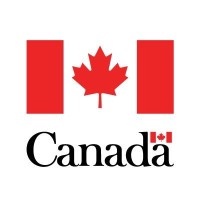
Grant and FundingClosed
Green Industrial Facilities and Manufacturing Program — Energy Efficiency Solutions Track
Natural Resources Canada (NRCan)Support for industrial energy efficiency in Canada

Wage Subsidies And InternsOpen
ECO Canada — Youth Employment in Natural Resources YNR
ECO CanadaSubsidy to hire young professionals in STEM
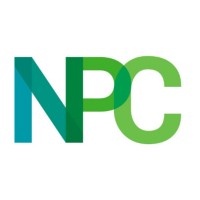
Wage Subsidies And InternsOpen
Access to Talent Program
Natural Products Canada (NPC)Wage subsidies for biologically-based innovation companies

Grant and FundingOpen
Proof-of-Concept Program
Natural Products Canada (NPC)Financing for natural product innovations
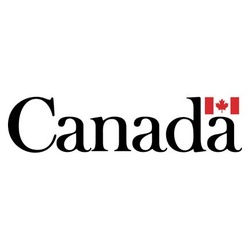
Grant and FundingClosed
Regional Tariff Response Initiative (RTRI) – Atlantic Canada
Government of CanadaSupports Atlantic Canadian SMEs impacted by international trade tariffs

Grant and FundingClosed
Indigenous and Stakeholder Capacity Fund - Regulatory Policy Dialogue
Canadian Nuclear Safety CommissionFunds participation in nuclear regulatory policy consultations for stakeholders
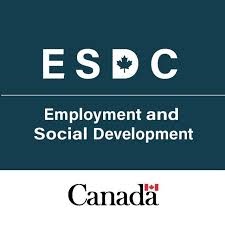
Partnering and CollaborationGrant and FundingClosed
Canadian Apprenticeship Strategy (CAS) - Union Training and Innovation (UTIP))
Employment and Social Development Canada (ESDC)Supports union-led training innovation for skilled Red Seal trades
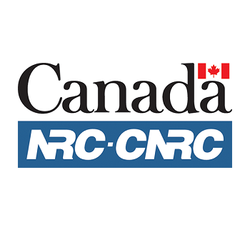
Grant and FundingClosed
Industrial Research Assistance Program (IRAP) – AI Assist
National Research Council Canada (NRC)Supports Canadian SMEs in adopting and integrating advanced AI solutions
Sign up to our platform to access the Clean Technology Manufacturing (CTM) Investment Tax Credit (ITC) information sheet for free
Get access to 4,000+ programs, practical guides, personalized alerts, and an AI assistant to support your grant applications.